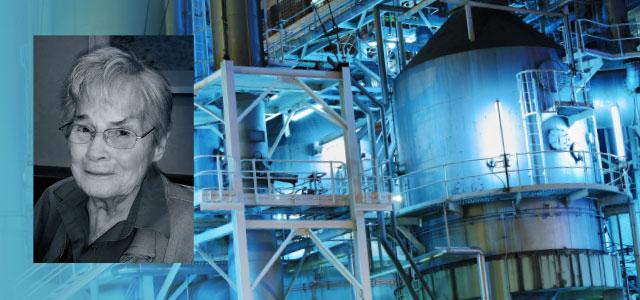
Professor Emerita Barbara Resnik
The Roots of Occupational Health at UC San Francisco School of Nursing
An interview with Professor Emerita Barbara Resnik, the founder of the Occupational and Environmental Health Nursing program at UC San Francisco School of Nursing.
SOC: How did the School’s Occupational and Environmental Health Nursing program get started?
BR: In the late ’70s, workers at the Occidental Chemical plant [in Lathrop, Calif.] became sterile from exposure to the pesticide DBCP [dibromochloropropane]. In response, the California Department of Industrial Relations worked with UC to establish centers in Northern and Southern California, with the purpose of developing resources to deal with occupational health problems, including conducting research. When the initial two-year contract was up, people realized it was necessary to have these centers survive, and they became a permanent part of the UC budget. (They also receive funding from the National Institute for Occupational Safety and Health [NIOSH], which is subject to review every five years.)
I was in the Division of Ambulatory and Community Medicine and Community Health Nursing at the time, and had been recruited to develop an adult nurse practitioner (ANP) program in primary care through a joint program with both departments. It was first developed as a certificate-level program – a yearlong continuing education program, not an academic program – and we trained 60-some-odd nurses over the course of the three-year contract. That experience led to development of an academic core/pathway program in adult primary care nursing at the master’s level. It included the core ANP preparation with the addition of specialization as occupational health nurse practitioners.
SOC: What did the program look like at first?
BR: Nobody knew much at the time about academic programs for nurses in occupational health. All we had then were certificate programs for working occupational health nurses, and we had the newly established Northern California Center for Occupational and Environmental Health. So we counted heavily on the UC Berkeley School of Public Health (one of the programs affiliated with the center) for resources, and initially, students and faculty traveled to Berkeley for occupational specialty coursework in industrial hygiene and safety. Dr. Bob Spear, the first director of the center, described those early days in program development as sometimes resembling smoke and mirrors. But I fondly remember the close teamwork among the faculties involved in shaping the center’s programs.
SOC: Why is occupational and environmental health nursing needed?
BR: Most adults today are workers, and their work affects their being, their health. So the workplace is a good place to start in terms of preventing illness – and a perfect one for nursing, with its focus on health prevention and health promotion. Big industries are now cognizant of the need to keep employees healthy, and nurses – especially NPs – can play a central role.
SOC: Is it difficult to attract nurses to the field?
BR: I don’t think so. When we established the center, NIOSH also established resource centers and gave stipends, which are very attractive to students. That was important even though most students are enthusiastic about the field anyway, since it’s an ideal setting for nurses; they can do a lot of the work without medical supervision, and most have done very well.
SOC: When you look back on the program’s evolution, how does it make you feel?
BR: It was like having a baby – difficult at times, but what really matters is how the baby turns out. I am so very proud of the faculty! They have made the program one of the best of its kind, and they have built it into a highly sophisticated program in a specialty that’s really needed.



